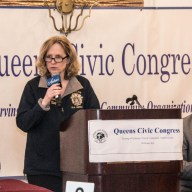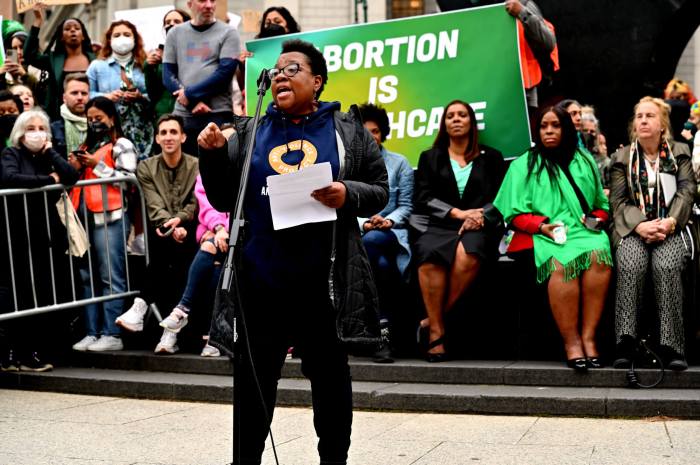Enormous cracks and gaping holes in the seawall separating the East River from Queensbridge Park are slated for repair, now that federal funds have been requested and City money has been appropriated to fix the waterfronts dangerously unstable bulkhead.
A $100,000 study by the Army Corps of Engineers, which is included in a House Appropriations bill scheduled for a vote this week, could start as early as this fall. The study would determine how to attack the problem of the seawalls 70-year-old foundation crumbling into the water.
"This is an emergency," said Elizabeth McQueen, volunteer warden of the park and its chief advocate. "The kids come in here and they dont know how dangerous it is, even though we put up caution tape."
McQueen discovered the sinkholes and cracks in the asphalt along the parks edge two years ago. The asphalt lies on top of a foundation of rotting timber, which has been eaten away over the years by organisms in the East River and has been eroded by the rivers flow. The weakened planks have begun to collapse, posing a threat to thousands of residents of the nearby Queensbridge Houses who frequent the park in the summertime.
Over the last two years, the Parks Dept. has put up fences and signs warning people to keep off the seawall, but they have been repeatedly torn down by people looking to fish in the river or play near the water. The area draws crowds of people for its majestic views of midtown Manhattan and the Queensboro Bridge.
"Its a little bit safer now that they filled in some of the holes," said McQueen of the temporary repairs made by the Parks Dept. to stabilize the bulkhead, one of many in a state of collapse around the City.
Still, the holes in Queensbridge Parks seawall are so dangerous that, in a tight budget year, $250,000 in City funds have been earmarked for emergency repairs. The cost of a major rehabilitation could run anywhere from $6 to $9 million, according to Parks estimates.
The money for the federal study was requested by Congressman Joe Crowley (D-Queens/Bronx). "Its an accident waiting to happen," said Crowley at a press conference this past Friday announcing the grant.
The study could entail everything from divers going into the murky river to examine damage to the seawalls structure to pits being dug to take samples of the foundation.
Although the seawall is owned by the City, the federal government was able to provide funding because of its interest in keeping shipping lanes unobstructed. In addition, Crowley cited the governments need for secure waterways in light of potential terrorist attacks.
"We have to think outside the box," said Crowley. "We dont know to what extent terrorists will use our natural resources to gain access to sites," he added, pointing out the proximity of a ConEd plant to the park.
The Queensbridge area of Long Island City will be represented by Congresswoman Carolyn Maloney (D-Queens) starting in January, when legislative redistricting takes effect. Maloney has already put in a request for $6 million in federal funds to fix the seawall but warned that "every dollar is a fight."
As soon as the study is completed and funding is in place, major repairs could take as little as one year.
That is music to the ears of McQueen, who has lived in the Queensbridge Houses for over 40 years and has spent her life enjoying the park she champions. "My vision is to get some flowers in here, maybe some sculpture, to try to beautify the park," she said. "Were trying to make it a good one."






























